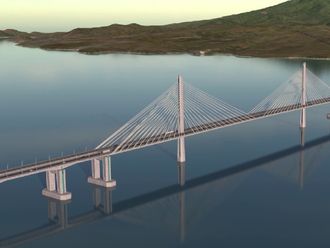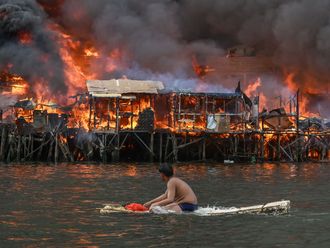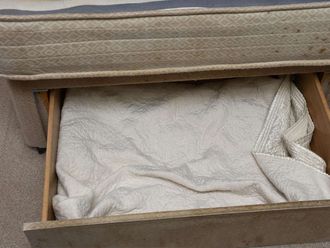Manila: A sea-based US operation in an exclusive economic zone — belonging to the Philippines in the South China Sea — is the main aim of ongoing talks between the two countries.
The meeting will also seek to propose rotation of US troops and equipment in the temporary land and sea bases, sources told Gulf News.
“Modalities for the increased rotational presence [of US troops and equipment] are right now being examined. One modality is the conduct of high-value, high-impact exercise,” said Defence Secretary Voltaire Gazmin. He did not give further details.
“Washington and Manila are working an agreement that will allow American forces to bring in military equipment and other equipment to two former US bases — (the former US Subic Naval Base and Clark Air Base (in Olongapo, Zambales and Angeles, Pampanga in central Luzon,),” Gazmin said last June.
At the time, he also said it is no longer necessary to build additional bases in Subic, which faces the South China Sea.
The US and the Philippines began holding talks on access in the Philippines, in Washington last year, he also revealed then.
Subic is 130 nautical miles away from the Scarborough Shoal where Chinese and Philippine ships were in a stand-off for more than 50 days starting May 2012. Chinese vessels now control the Scarborough Shoal.
All these revelations already hinted about the final shape of the modalities of the proposed military alliance, another source who requested for anonymity told Gulf News.
Gazmin’s statements last June also hinted that both countries are mulling more frequent joint US-Philippine exercises which would be more sea-based than land-based, the same source said, adding that the Philippine government’s approval is needed for more frequent “joint US-Philippine war-games” in the West Philippine Sea, a name given by the Philippine government for the South China Sea.
It also refers to the 300 nautical miles exclusive economic zone of the Philippines in the South China Sea.
Once the proposed US-Philippine agreement on access and expanded rotation of troops and equipment is firmed up, it would be used as a precedent to accommodate more joint war games at sea, with Japan and Australia, most probably in the Pacific Ocean, at the eastern seaboard of the Philippines, said the same source.
Last June, Defence Secretary Gazmin also held a special meeting with then visiting Japan Defence Minister Itsunori Onodera.
Although the two former US bases in the Philippines have been transformed for commercial use in 1992 (after the Senate had rejected the US-proposed 10 year extension of the now defunct Military Bases Agreement), part of Clark and Subic are still used for US troops engaged in joint war-games with Philippine troops. US military aircraft and warships that accompany these short-term exercises.
Starting 2002, US troops have been rotating from northern and southern Luzon where they also extend intelligence assistance to Filipino soldiers tasked to battle the Al Qaida-linked Abu Sayyaf Group.
It is blamed for kidnap-for-ransom, beheadings, bombings and other terror activities.
The US-Philippine Visiting Force Agreement (VFA) that the Philippine Congress ratified in 1998 is the guideline of the holding of large-scale joint US-Philippine war games.
Tens of thousands of US troops left the Philippines in 1991 after an earthquake damaged the former US Clark Air Base, and in 1992, when the Senate refused to extend US presence in the former US Naval Base in Subic.
The Philippine Constitution bans permanent foreign bases including nuclear powered warships and fighter jets.
New talks for the proposed temporary basing rights for US troops and war materiel came after the Philippines and China have been at odds over claims in the South China Sea,
Observers believe these talks are part of the plan to the US to redeploy majority of its naval assets from the Middle East to the Asia Pacific by 2020.
The South China Sea is being claimed wholly by China, Taiwan, and Vietnam, based on their historical rights on the said sealane. Brunei, Malaysia, and the Philippines claim some parts of the Spratly Archipelago, based on the provision of the United Nations Convention on the
Law of the Sea (UNCLOS) 300 nautical miles exclusive economic zone starting from their shores.
The deterioration of the overlapping claims in the South China Sea could result in a flashpoint that could affect the growing economy of the 10-member countries of the Association of Southeast Asian Nations (Asean).
Asean countries include Brunei, Cambodia, Indonesia, Laos, Malaysia, Myanmar, Philippines, Singapore, Thailand, and Vietnam.












